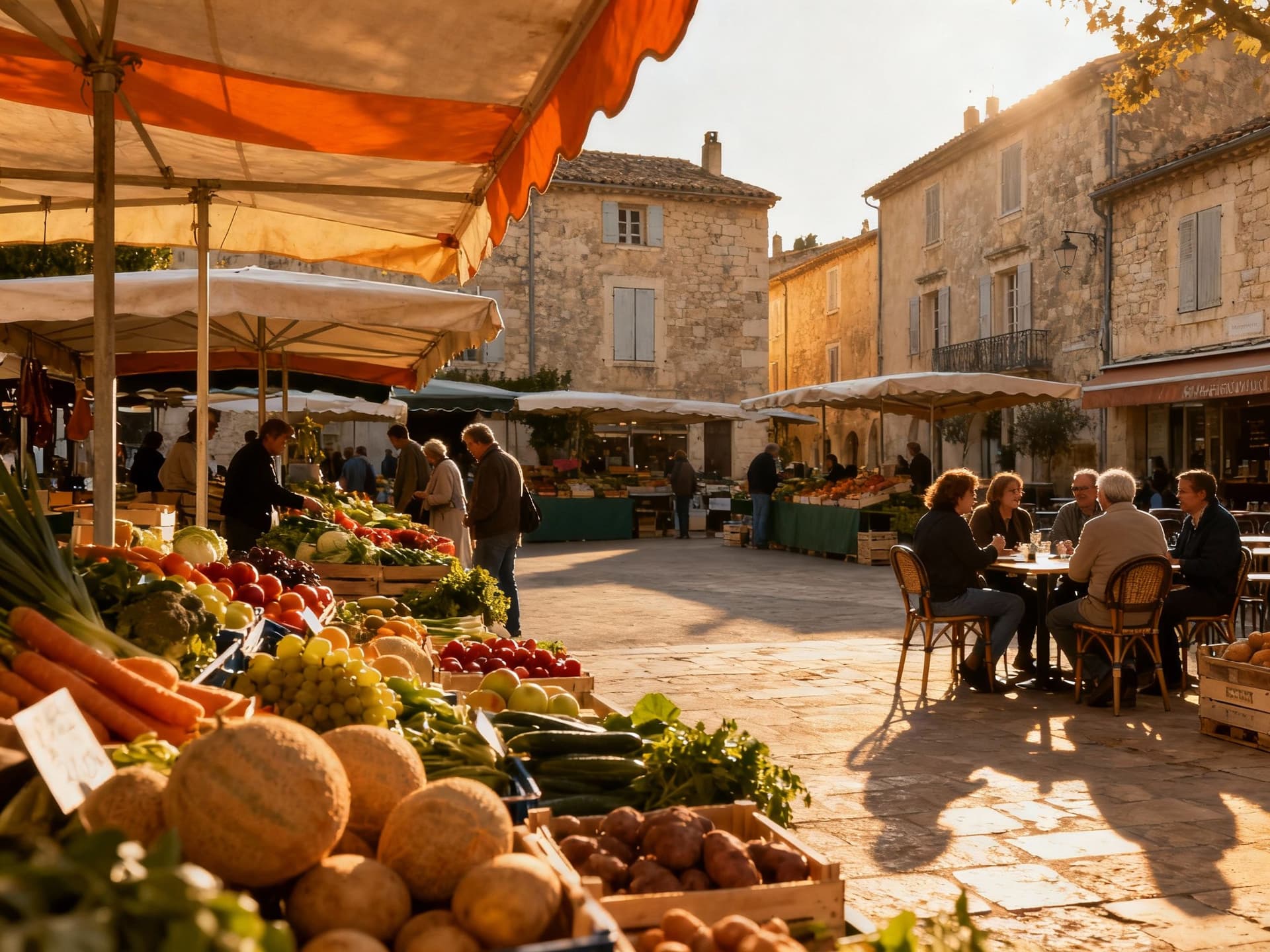France: Match Neighbourhood Life to Real Rental Yields
France mixes daily charm with measurable rental patterns; match neighbourhood rituals to net-yield calculations and focus on local demand, seasonality and verified rents.
Imagine starting a Saturday in the Marais with thick café crema, then slipping into a TGV seat bound for Lyon to eat lunch on the Rhône; that seamless mix of scale, season and ritual is what makes buying in France feel like joining a long-running, tasteful story. For international buyers the romance is obvious—markets that reward long-term capital preservation, regional diversity from Riviera villas to Atlantic surf towns, and neighbourhoods where daily life still revolves around markets, boulangeries and the local bistrot. But behind that romance are measurable rental patterns, yield spreads and seasonal demand signals that determine whether a property lives as lifestyle or as an income-producing asset. This piece blends sensory, on-the-ground detail with the data you need to estimate yield, match product to tenant demand and avoid the mistakes many foreigners make when equating charm with cashflow.
Living the French Life: Streets, Seasons and Small Rituals

France’s everyday rhythm is local first. Mornings begin with neighbourhood boulangeries — in Paris rue des Rosiers, in Nice the promenade markets near Cours Saleya — and weekends are often measured by the farmers’ market schedule rather than the mall. These routines matter for investors because tenancy demand mirrors local life: small, well-located flats near transport nodes rent quickly to young professionals; coastal studios spike in summer rental rates; village houses near reputable schools attract long-term family lets. Understanding those micro-rhythms helps you pick property that fits real rental demand, not just the aspirational image of French living.
Neighbourhood spotlights: Paris, Bordeaux, Nice
Paris remains a capital of concentrated demand: dense, hyper-liquid and wealth-skewed, especially in the western arrondissements where prices per sqm are highest. Bordeaux has matured from a weekend escape into a strong year-round rental market thanks to rail links to Paris and a growing tech and wine tourism cluster. Nice and the wider Côte d’Azur deliver seasonal spikes but also attract year-round, well-heeled tenants who value international schools and easy air links; expect higher purchase prices but also premium short-term rates during high season. These differences matter: a 2% cap-rate in central Paris can be better risk-adjusted than a 5% gross yield in a seasonal resort once vacancy, management and taxation are included.
Food, markets and micro-locations that drive rents
Places with an active daily life—weekly markets, cafés that fill every morning and evening, reliable public transport—produce steadier rental demand. In Provence, properties that sit within walking distance of a market square or a popular boulangerie command both higher long-term rents and faster letting times. In Atlantic coastal towns, proximity to surf schools and ferry links or to a reputable lycée can double your pool of potential tenants. For investors the practical rule is simple: buy where everyday services cluster; tenants pay a premium for convenience and community.
Making the Move: Practical Considerations that Match Lifestyle to Yield

Dreaming and budgeting are separate exercises. Recent INSEE data show prices stabilising and modest growth in early 2025, which narrows the room for speculative capital gains and shifts attention back to rental returns as the core performance metric. Gross rental yields vary widely: central Paris typically posts lower gross yields than regional cities; some provincial cities and holiday locations report gross yields above national averages, but those figures can mask seasonality and higher operating costs. Use local price-per-m2 and effective yield (net of costs) rather than headline gross yield to compare opportunities across regions.
Property styles and what tenants actually rent
French product matters: Paris and large regional cities are dominated by older apartment stock—stone façades, small kitchens, efficient floorplans—that appeal to professionals and international students. New-builds on the outskirts offer better amenities and parking but often face weaker yield metrics because prices are higher per m2. In resort areas, one-bedroom apartments or studios close to beaches perform well for short-lets, while three-bedroom houses near good schools attract family lets and longer leases. Match the unit mix to the tenant profile you can service reliably.
Working with local experts who understand both lifestyle and yields
A good local agent does more than source pretty properties; they quantify yield drivers: local vacancy rates, seasonal demand curves, tenant profile, and expected running costs. Ask them for recent comparable rents, average days-on-market, and actual rental invoices from similar buildings. For international investors, secure a bilingual notaire and an agency with proven landlord services—turnkey management reduces friction and vacancy. Use agencies as filters: they convert the lifestyle you want into a replicable rental proposition.
Practical checklist to align lifestyle with yield
1. Estimate net yield: start with local market rents then subtract management (6–12%), insurance, property tax and typical vacancy; use conservative occupancy assumptions. 2. Validate demand: request recent letting records for comparable units and ask about seasonality. 3. Confirm mobility: check transport links, school catchments, and hospital access—these matter for long-term lets. 4. Budget for renovations: older French apartments often require €300–€800/m2 for modernisation to achieve market rent. 5. Arrange bilingual local support: notaire, agent, and an accountant familiar with non-resident tax rules.
Insider Knowledge: What Expats Wish They'd Known
Expats regularly tell the same practical truths: French papers and paperwork move slowly, local sellers value privacy and provenance, and the most desirable streets are often priced for intergenerational wealth rather than rental return. The social fabric—the boulangerie owner, the mairie, the school—shapes tenant behaviour and retention more than Instagram-friendly façades. Foreign buyers who treat property as a place to plug into everyday life rather than a short-term flip tend to achieve steadier yields and far fewer surprises.
Cultural and seasonal red flags
• Seasonality: Coastal towns can double rental income in July–August but suffer low occupancy outside summer, increasing effective vacancy. • Local festivals and tourism events cause short-term rental spikes that skew average yields—verify longer-term baseline rents. • Building constraints: many historic buildings restrict renovations and installation of amenities that tenants expect, such as AC or larger bathrooms. • Local sentiment: second-home concentration can depress year-round communities and create regulatory pressure on short-lets.
Long-term lifestyle considerations that affect returns
Think of French property as a slow compounder: location quality, legal clarity and tenant relationships build value over decades. Urban policy (zoning, rental caps, energy retrofit requirements) can materially affect net yields; follow local municipal plans and upcoming regulations. Diversify by product—mix city flats for stable yields with a carefully chosen holiday rental to balance cashflow seasonality. The most resilient portfolios pair daily-life locations with careful underwriting of operating costs.
Conclusion: if France seduces you with its markets and markets test you with numbers, the right purchase sits at the intersection of place and proof. Fall in love with a street—the boulangerie, the tram stop, the evening marché—but demand that romance be quantified: realistic net yields, verified letting evidence and local experts who translate lifestyle into predictable cashflow. Start by asking agents for comparable rental invoices, check INSEE and national yield surveys for regional benchmarks, and treat management as the operational heart of your investment. When lifestyle and disciplined analysis align, France rewards patient, well-informed owners.
Swedish financier who guided 150+ families to Spanish title deeds since relocating from Stockholm in 2012, focusing on legal and tax implications.


